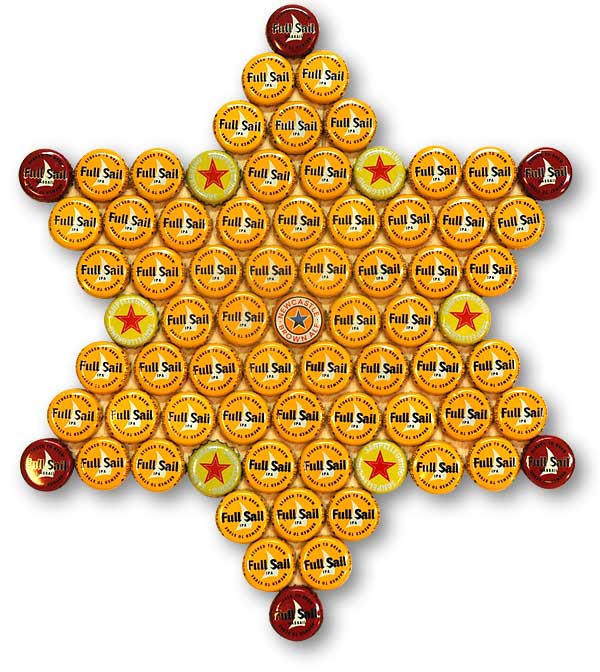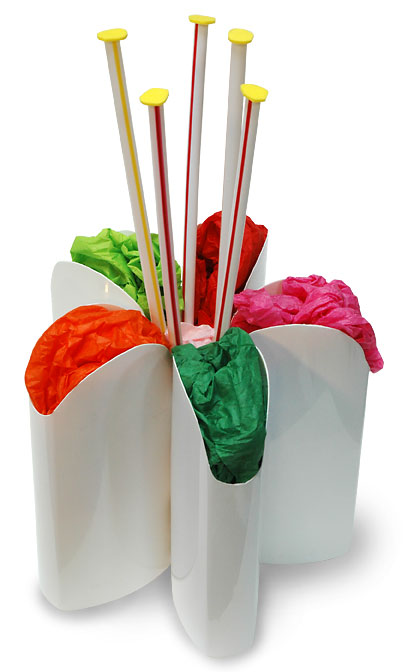 One day I peeled the labels off a plastic bottle that had held skin cream. I was impressed with the elegant form of this white object. I cut it in half and made a wrap out of it.
One day I peeled the labels off a plastic bottle that had held skin cream. I was impressed with the elegant form of this white object. I cut it in half and made a wrap out of it.
I continued to save these specific bottles. This gift-basket wrap is my first attempt at joining a number of them.
I traced a half-circle on the tops of the bottle, cutting the top off with my scroll saw. I had to sand the edges to remove a burr.
I used a plastic 35mm film can to join the five bottles together. I applied a stripe of hot glue to the side of the film can and joined it to the first bottle. I arranged the five bottles into a pentagonal array, marked the film can, added stripes of glue and, one-at-a-time, joined the five bottles into the basket.
In reference to the floral form, I added five stamen made out of drinking straws with craft foam on the top. Then I stuffed the five pockets and the central well with recycled wrapping tissue.
This wrap accommodates small gifts such as candy, gift cards, pens and pencils, or jewelry.
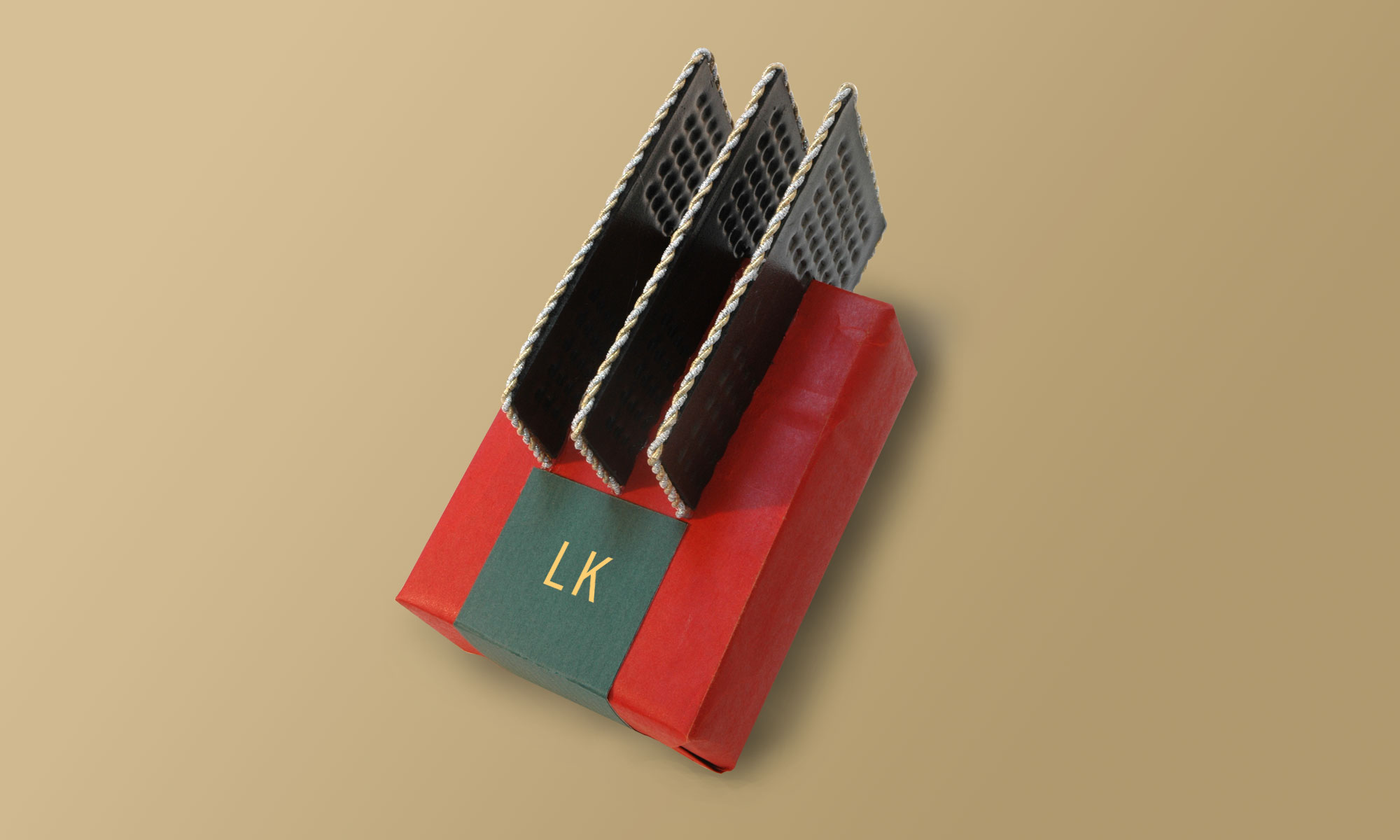
 I’ve been thinking about this one since we brought home some bison ribs from The ( inimitable) Fort restaurant in March. It was a dinner honoring Chips Barry, and presented by Patty Limerick, two of the funniest people in the world. The sharp wit and the excellent meat joined forces in my mind, and when we got home with the night’s extra (not to say spare) ribs in wonderful black foam take-out boxes, I began to see a samurai wrap.
I’ve been thinking about this one since we brought home some bison ribs from The ( inimitable) Fort restaurant in March. It was a dinner honoring Chips Barry, and presented by Patty Limerick, two of the funniest people in the world. The sharp wit and the excellent meat joined forces in my mind, and when we got home with the night’s extra (not to say spare) ribs in wonderful black foam take-out boxes, I began to see a samurai wrap.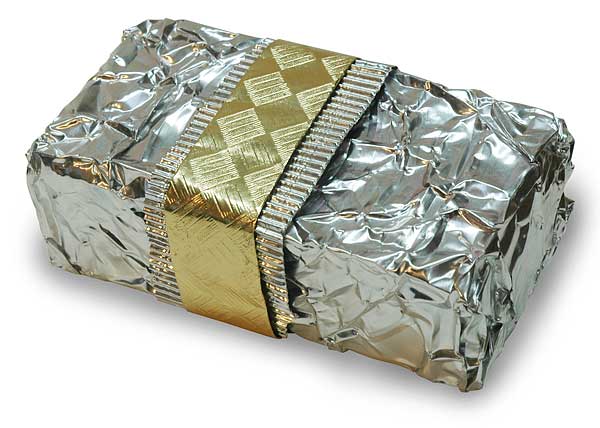
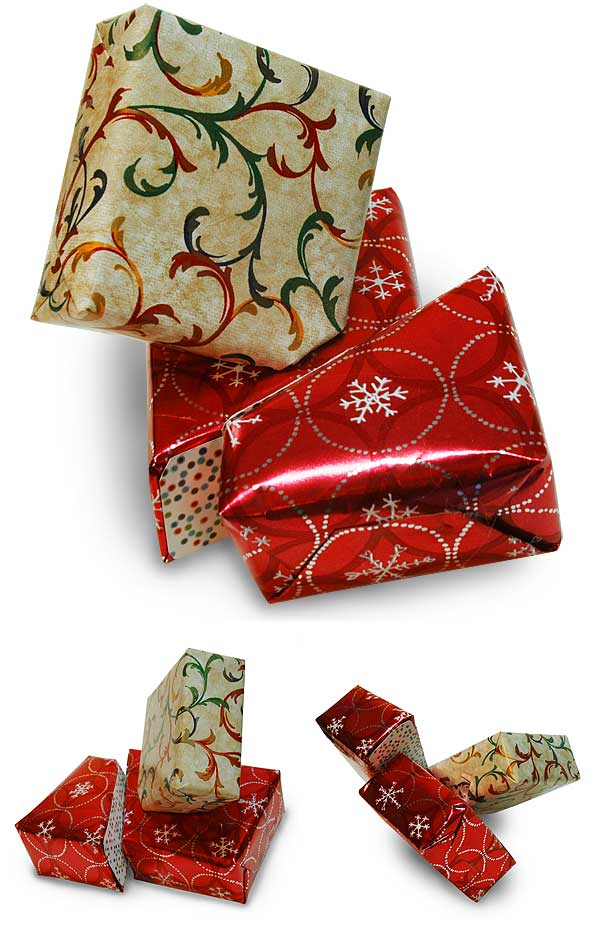 I have been thinking about multi-box wraps since I did the cow wrap at Christmas. In this case I was thinking about literal cubism. I wanted to see sliced and interpenetrating boxes.
I have been thinking about multi-box wraps since I did the cow wrap at Christmas. In this case I was thinking about literal cubism. I wanted to see sliced and interpenetrating boxes.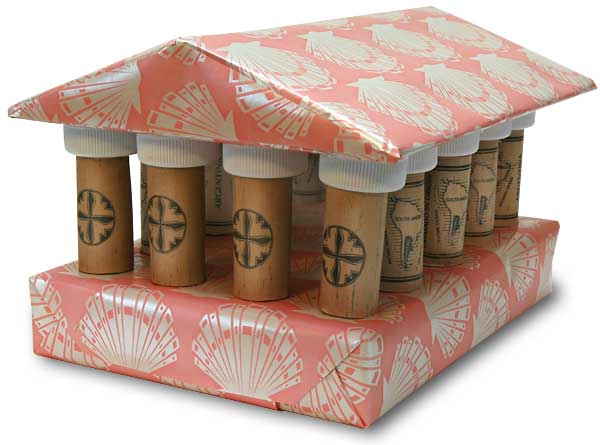
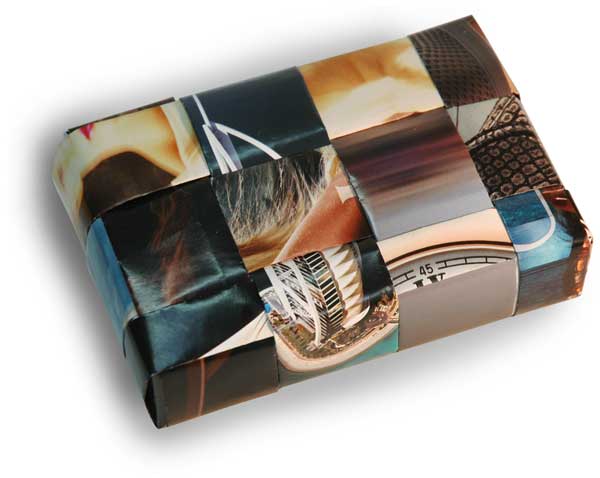 Wrapping with bands is a great way to take advantage of our print-rich environment. I take magazine pages and cut them into long strips, 2″-5″ wide. Fold the two long edges over. This gives both the edges and the whole band a softened and rounded look, a pillow effect.
Wrapping with bands is a great way to take advantage of our print-rich environment. I take magazine pages and cut them into long strips, 2″-5″ wide. Fold the two long edges over. This gives both the edges and the whole band a softened and rounded look, a pillow effect.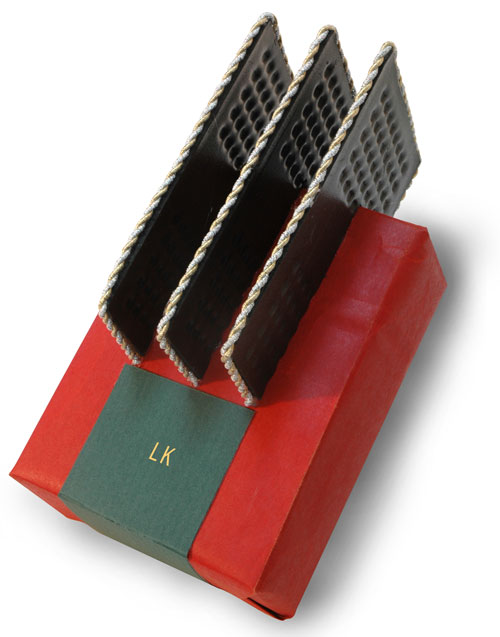
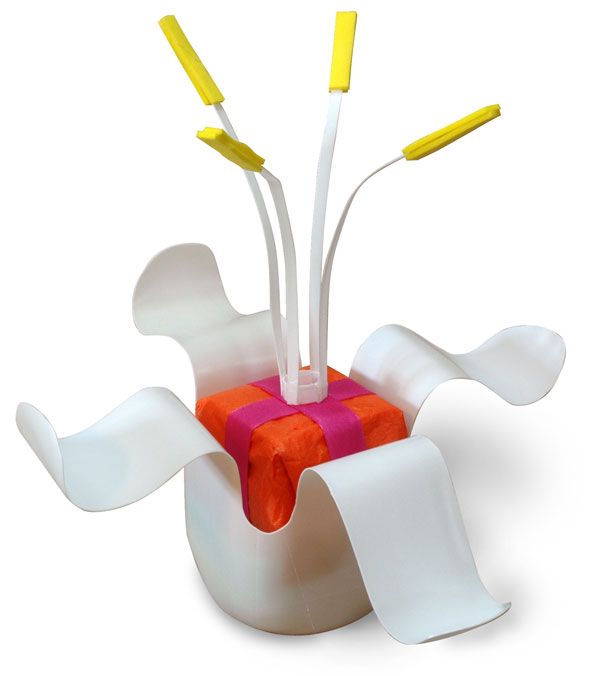 I took a kefir bottle and cut off the printed wrap. Underneath it was a pure white bottle. I cut off the top area and then took scissors and cut down along the corners and back up again, four times. This made the four petals. I trimmed their tops to round them out. Working the petals with my fingers I was able to give them soft curves.
I took a kefir bottle and cut off the printed wrap. Underneath it was a pure white bottle. I cut off the top area and then took scissors and cut down along the corners and back up again, four times. This made the four petals. I trimmed their tops to round them out. Working the petals with my fingers I was able to give them soft curves.
